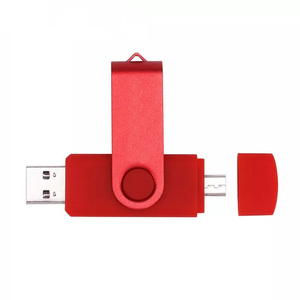(35103 products available)


























































































































































































































USB pen drives, also known as USB flash drives, are portable storage devices. They have USB-A or USB-C connectors that can connect to computers, laptops, and other electronic devices. These pen drives are useful for data storage and transfer because they are small, lightweight, and easy to carry. There are many different types of USB pen drives, and each one has unique features that make it suitable for specific tasks.
These pen drives have a USB-A connector. They are the most widely used because they are compatible with almost all devices. They come in various storage capacities, from 2 GB to 1 TB, and are a good choice for storing and transferring files, documents, photos, and videos.
These pen drives have a USB-C connector. They are becoming more popular because many new laptops, tablets, and smartphones are using the USB-C port. USB-C flash drives offer faster data transfer speeds and better performance.
These pen drives are very small and compact. They are ideal for users who want a portable storage solution that won't take up much space. Mini USB drives are convenient to carry in a pocket or attach to a keychain.
These pen drives have built-in security features to protect sensitive data. They offer encryption, password protection, and fingerprint authentication to ensure that files are safe from unauthorized access. Security USB drives are suitable for professionals and businesses that deal with confidential information.
These pen drives are designed for users who need to transfer large files quickly. They use the latest USB technology to provide faster read and write speeds. High-speed USB drives are useful for professionals working with multimedia content.
These pen drives have dual connectors that can be plugged into both a USB port and a micro-USB or USB-C port. They allow users to transfer files between computers and smartphones. OTG USB drives are very convenient for mobile users.
Different types of pen drives with USB are known for their convenient storage and various functions. Features vary depending on the type of pen drive and the manufacturer. Below are some common features.
USB pen drives are handy tools for transporting data and files. They are used in various industries and sectors, such as;
When purchasing bulk USB pen drives, buyers should first identify which type of USB is suitable for their target market. Then, it is important to determine the storage capacity, as this will vary according to the consumer's needs. For example, if the target audience is students, a lower storage capacity may be enough for their notes. However, if the target audience is photographers, videographers or gamers, higher storage capacity will be required to store their files. In addition, buyers should consider USB flash drives with special features to meet the specific needs of the target audience. For example, if the target audience is business people, secure USB flash drives may be more suitable.
When selecting pen drive USB types, knowing the target audience is very important. This will help determine the kind of USB drive that will suit them. For example, students will prefer a simple USB flash drive, while business people will prefer a secure USB flash drive. In addition to this, buyers should select USB drives that are more popular among customers. This will help increase sales. Also, when purchasing in bulk, buyers should be sure to get a good price to maximize profits. When choosing a USB drive, buyers should consider the brand. They should select a brand that is known to produce quality products. In addition to this, buyers should consider the supplier's reputation and customer support. They should also compare prices from different suppliers to get the best deal. Finally, buyers should consider the warranty and return policy before making a purchase.
Q1. What are the different types of USB pen drives?
A1. A USB flash drive comes in different shapes and sizes. They include standard USB, miniature USB, and USB Type C. Each type of USB pen drive has a unique design. The differences in the pen drive's physical features allow users to transfer and store data from PCs, tablets, and smartphones.
Q2. What is the difference between USB A and USB C?
A2. USB-A is the standard USB connector that has been around for 20 years. USB-A is larger than USB-C. It is also not reversible. USB-A is the most common USB connector, while USB-C is more advanced. USB-C has many benefits, such as being able to transfer data and charge devices quickly. However, devices with USB-C are still limited.
Q3. What are the different types of USB connectors?
A3. Every hardware device needs a different USB connector to connect with a USB cable. Common USB connectors include USB-A, USB-B, USB-C, Micro USB, Mini USB, and USB 3.0, 2.0, 3.1, 3.2, and 4.0.
Q4. Are USB drives still used?
A4. Yes. USB drives are still the most widely used hardware for transferring data. They are also affordable and easy to use. However, in the next five years, USB drives may become outdated as cloud storage and wireless solutions become more popular.
Q5. What is the fastest pen drive?
A5. The speed of a pen drive depends on various factors like the USB version, the type of flash memory, and the brand. A pen drive with a USB 3.1 and 3.2 Gen 2 connection can transfer data at a speed of 550 MB/sec. Examples of fast pen drives include the Samsung 32 GB USB 3.1 and 3.2 Gen 2 Flash Drive.